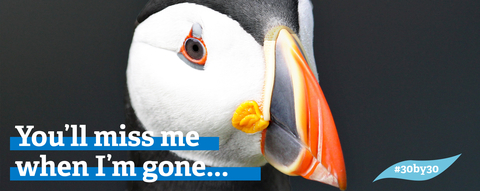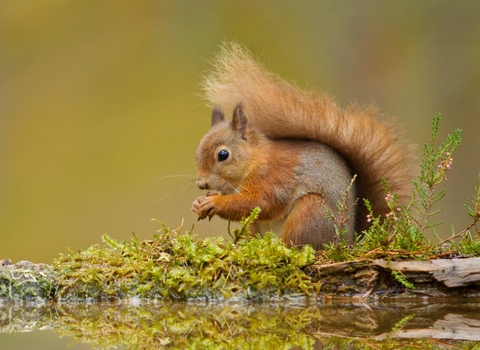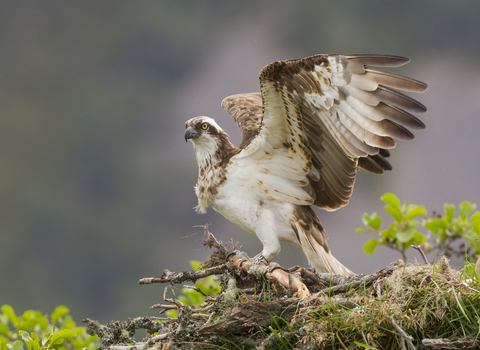
Puffin. Image by: Lynne Newton.
Help us to restore 30% of land and sea for nature by 2030
Our natural world is in trouble
Wildlife is disappearing at an alarming rate - some are calling it the next mass extinction - and the threat of climate catastrophe is a constant worry. We live in a time of emergency.
There is still hope - we can tackle both of these critical issues - but we have to act now. Time is running out.
What needs to happen?
The Wildlife Trusts are calling for at least 30% of our land and sea to be connected and protected for nature’s recovery by 2030. Making more space for nature to become abundant once again will give our struggling wildlife the chance to recover and also restore beautiful wild places - places that store carbon and help to tackle the climate crisis.
30% is the bare minimum that nature needs to start recovering but we are far short of this and need your help to turn things around...
The next ten years must be a time of renewal, of rewilding our lives, of green recovery. We all need nature more than ever and when we succeed in reaching 30 by 30 we’ll have wilder landscapes that store carbon and provide on-your-doorstep nature for people too. Everyone can support and help us to succeed.Chief Executive, The Wildlife Trusts
30 by 30 Appeal
Lack of wild places and fragmentation of those that remain has had a disastrous effect; only 10% of land is protected in the UK, and much of this is in poor condition. That’s why The Wildlife Trusts recently called on Government to introduce a new landscape designation for England called ‘Wildbelt.’ This would be for the purpose of putting land into nature’s recovery, such as through the creation of wildlife corridors, natural regeneration of woodland, restoration of peatlands, improvement of wetlands, and rewilding. We all need nature now more than ever.
Each Wildlife Trust is playing its part and we must do our bit...
Your donation to Northumberland Wildlife Trust will help deliver vital work in the region, such as:-
- Pursuing opportunities for land acquisition so that we can expand core areas and build back better and stronger;
- Boosting peatland restoration on key sites such as Whitelee, Benshaw Moor and The Wou;
- Improving the Local Wildlife Sites system – these are some of the most important nature sites in Northumberland and data management urgently needs to be upgraded.
A better tomorrow starts today - please donate to save the wildlife and places you love. Thank you.



